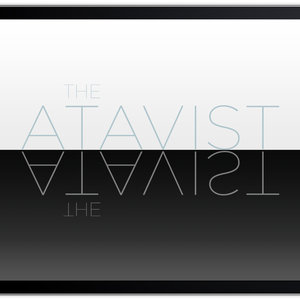 If you focus too much on the numbers, the prospect of success in digital publishing does not exactly fill you with hope. A discouraging number of start-ups have tried, and failed, to put a digital gloss on existing print-based publishing models, only to find that competition over tiny slivers of market share is ultimately futile in an Amazon-dominated environment. Cue Wall Street soundtrack.
If you focus too much on the numbers, the prospect of success in digital publishing does not exactly fill you with hope. A discouraging number of start-ups have tried, and failed, to put a digital gloss on existing print-based publishing models, only to find that competition over tiny slivers of market share is ultimately futile in an Amazon-dominated environment. Cue Wall Street soundtrack.
But after taking a look at Brooklyn-based The Atavist, things start to look up. Their efforts are divided into two main categories: publishing e-singles — original long-form digital content available at low cost and per the exact specifications of the authors they publish — and licensing their own content-management software to outside publishing entities.
The first thing one notices when visiting the site is the absence of a single advertisement, rare for anything web-based, let alone a publisher. But they aren’t so naive. David Carr, in his New York Times article from May 20th, points to a nice cushion of venture capital the creators were able to scratch together in the beginning. This backing might have given them some leeway in attracting advertisers at their January 2011 inception.
Unlike aggregators such as The Browser, Longform, and Longreads, which pick up pieces from other renowned publications and attract deep-pocketed advertisers (airlines, movie production companies, clothing labels) with the promise of a baked-in cult readership, The Atavist contracts original work from authors who expect to be paid. Then, at a retail price of two to three dollars per piece in a still-modest selection of content, the publisher doesn’t stand to make a worthwhile profit. What I like about their approach to seeking investment is that, rather than running ads from the highest bidder, they’ve selectively courted a dynamic pool of media clients to whom they license their software and borrow brand recognition as an added bonus.
If this sounds like a lopsided equation for a company calling itself a publisher, where the bulk of revenue is derived in a non-editorial capacity, it is. But it isn’t terribly original. Traditional houses function in much the same way, only with different variables, where the blockbusters fund the pet projects. Random House just demonstrated this with their most recent move to give all company employees a $5000 holiday bonus because one book did well. Whether it’s a book or a more esoteric service, publishers need only one sturdy source of income to keep the less lucrative areas afloat. In the long run, it’s important to keep in mind that strong critical reviews can be equally if not more valuable than immediate commercial success.
In an article on PaidContent.com from last week, Laura Hazard Owen reports that The Atavist, along with like-minded publisher of fiction and nonfiction e-singles, Byliner, will begin testing the waters of all-access monthly subscription.
“Authors will still get a cut, even if subscribers aren’t paying for a specific story; at the end of each month, subscription money will be divvied up based on the number of downloads for each individual author,” reports Nieman Journalism Lab in discussing Atavist. Similarly, Byliner authors will receive subscription royalties based on how much traffic their work brings to the site. What’s not to like about that?
In Big Six corners as well, this phenomenon is taking root. Earlier this year, I listened to Brian Tart, the publisher of Penguin’s Dutton imprint, speak about the strategic shrewdness of maximizing this format. E-Specials, as the imprint calls them, are usually under 100 pages in length and can publish as early as seven weeks from the author’s manuscript submission. For a print book, that same process can take over a year, which is why e-special authors receive little to no advance and make the majority of their earnings in royalties. Readers appreciate the low cost of the e-Specials and authors like having more of their work available to the consumptive reading public. It also gives the publisher a reason to promote the author to the media and, if all goes well, a way to remind readers about the author’s previous works.
What this small and experimental niche offers is a different way of looking at how publishers might structure their businesses going forward. The thinking to date has been that publishers ought to keep their print business comfortable in order to branch out into ebook production, but this model is becoming increasingly strained amid market pressures and economic downturn. Meanwhile, solutions in the form of giant corporate mergers are giving a lot of people a headache. Perhaps the logic should flip, and publishers should divert the bulk of their efforts towards more profitable media ventures grown from within, and with new-found stability, begin to rebuild a viable print infrastructure.
This post may contain affiliate links.








